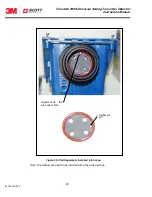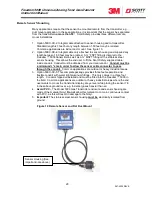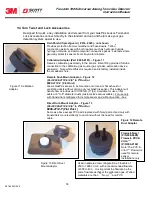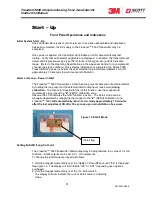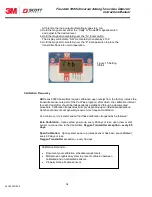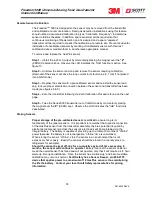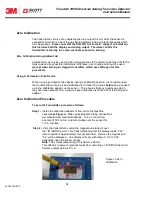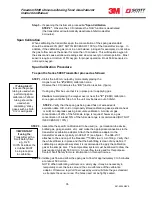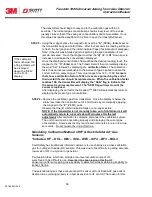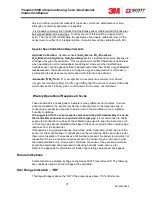
33
087-0020 REV
E
Remote Sensor Calibration
The Freedom
™
5000 is designed so the sensor may be removed from the transmitter
and calibrated at a remote location. Fixed gas detection installations using this feature
should utilize a documented calibration log (see “Calibration Frequency”) to determine
sensor rotation schedules. In addition, spare sensor(s) will be required so that
continuous monitoring of the detection point is assured and a spare “powered”
transmitter will be required to conduct the calibration at a remote site. Prevent accidental
installation of uncalibrated sensors by marking all calibrated sensors with their last
calibration date or maintain them in an otherwise appropriate manner.
To remove and replace the GasPlus sensor:
Step 1
– Inhibit the 4-20 mA output by momentarily placing the magnet over the
” Z”
(ZERO) Calibration Zone. Observe the LCD indicates the “IHB” function is active. See
figure 13.
Step 2 –
Unscrew the sensor end-cap and remove the sensor requiring calibration.
(Removal of the sensor will drive the loop current to its fault value (3.1 mA) if not placed
into inhibit mode.)
Step 3 –
Replace the sensor with a pre-calibrated sensor and reinstall the sensor end
cap. Ensure proper electrical connection between the sensor and transmitter has been
made (see figures 8 & 9).
Step 4 –
Zero the transmitter following the Zero Calibration Procedure found on the next
page.
Step 5 –
Take the Series 5000 transmitter out of inhibit mode by momentarily placing
the magnet over the”
Z”
(ZERO) spot. Observe the LCD indicates the “IHB” function is
deactivated.
Storing Sensors
Proper storage of the pre-calibrated sensor is critical
to ensure long term
functionality of the (spare) sensor. It is important to remember that upon disconnection
of the GasPlus sensor from the transmitter assembly, the bias potential (required by
electrochemical sensors) across the sensor’s electrodes will be maintained via the
integral battery. The battery is capable of providing up to a total of 9 months of “off-line”
power (because the battery is not rechargeable, “off-line” time is cumulative).
When storing the sensor “off-line”, store the sensor in an environment that is not
excessively hot or dusty. Ideally the sensors should be stored in a cool dry place (a
refrigerator for example).
Should the sensor be kept off-line for a cumulative period of time
exceeding 9
months, the sensor will continue to operate!
Battery failure of the sensor does not
mean the overall sensor has failed and will not operate, only that it will require a 4-8 hour
warm-up time upon installation. Once the sensor has “warmed-up” and become stable,
calibration may occur as normal.
Scott Safety has a Sensor Keeper, p/n 096-2197,
device that applies power to a maximum of 10 GasPlus sensors thus maintaining
the life the battery. Contact your local Scott Safety representative for pricing
information.
Freedom 5000 Universal Analog Toxic Gas Detector
Instruction Manual










